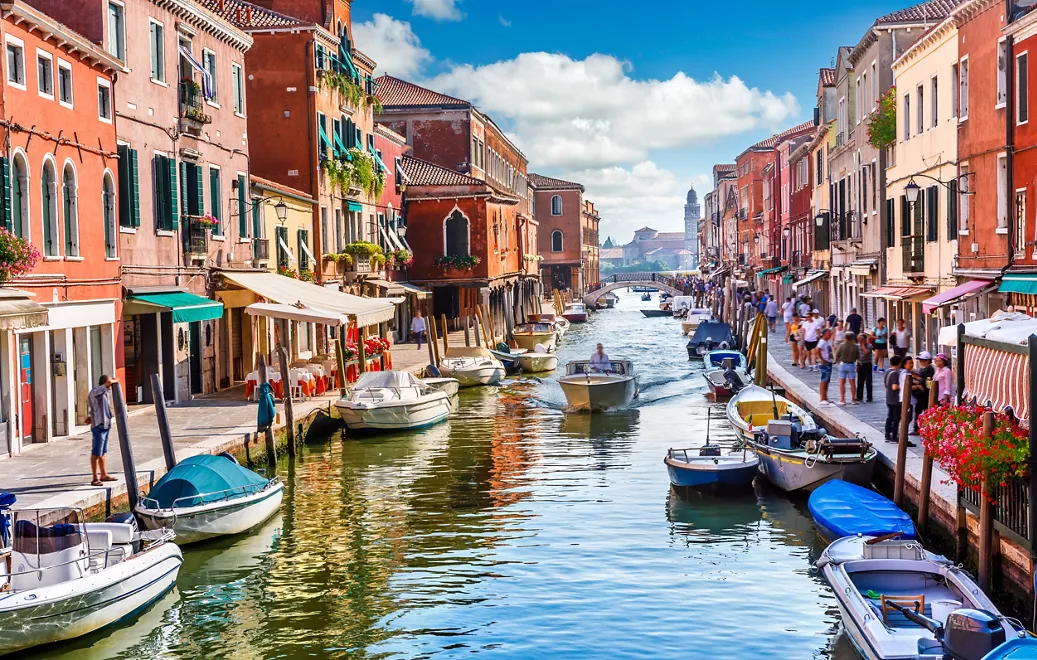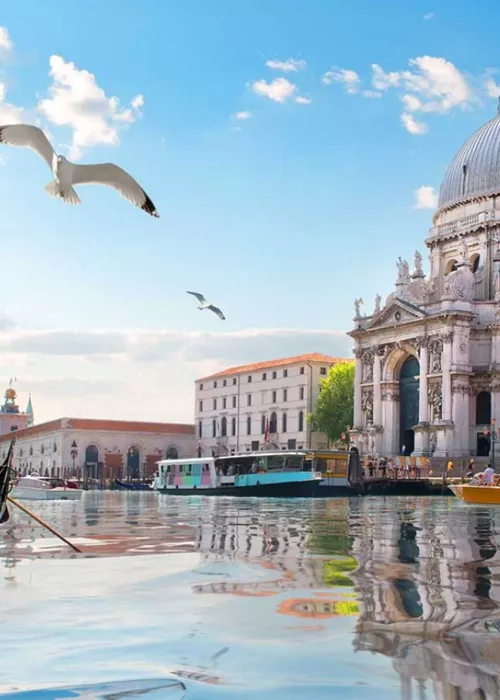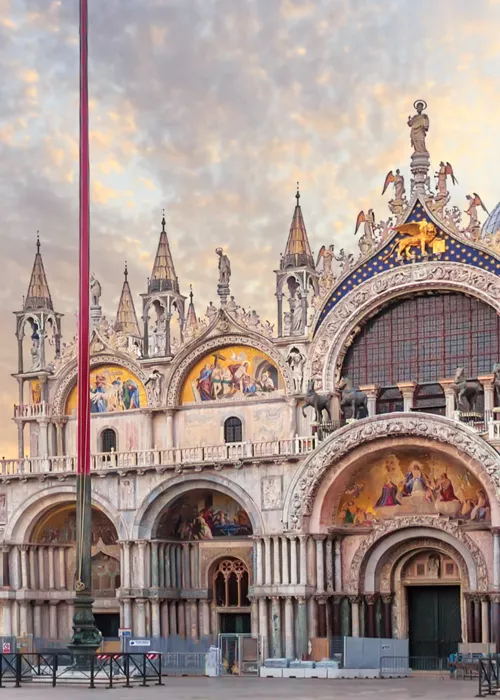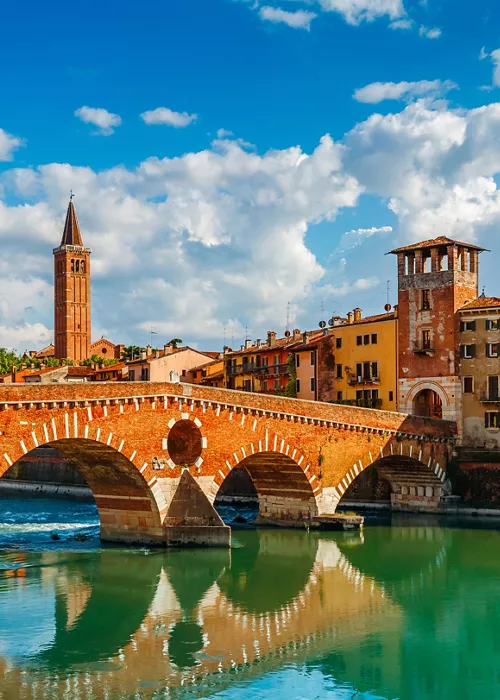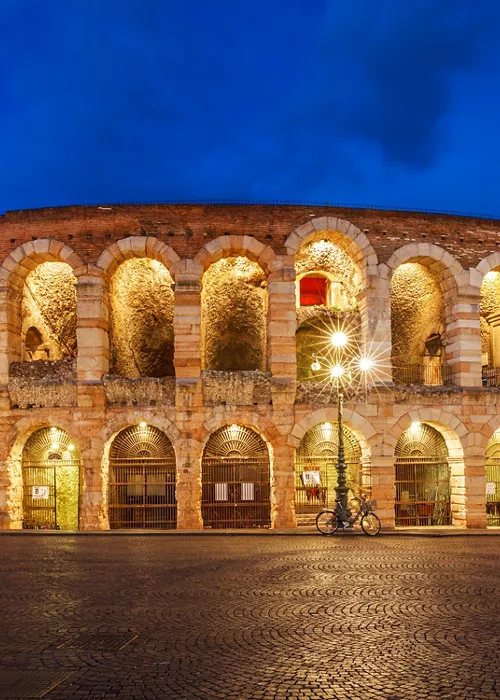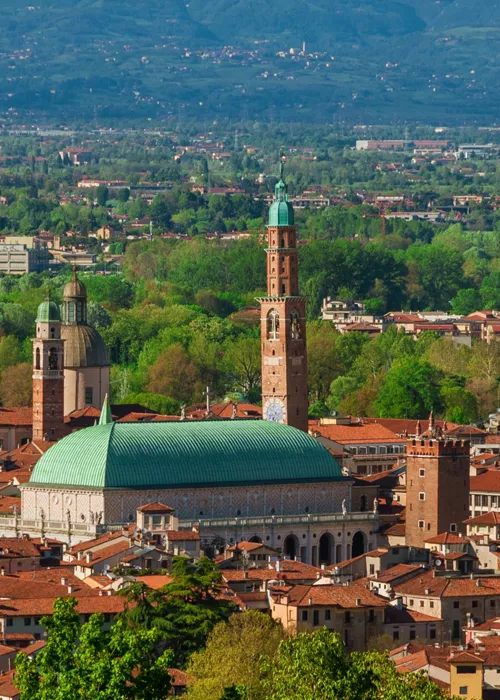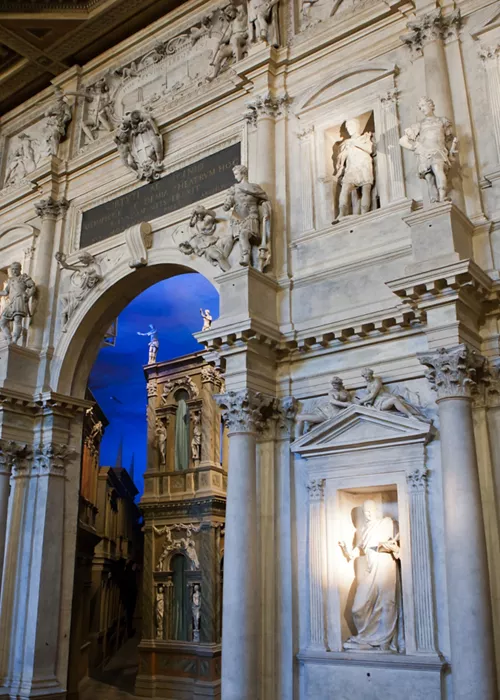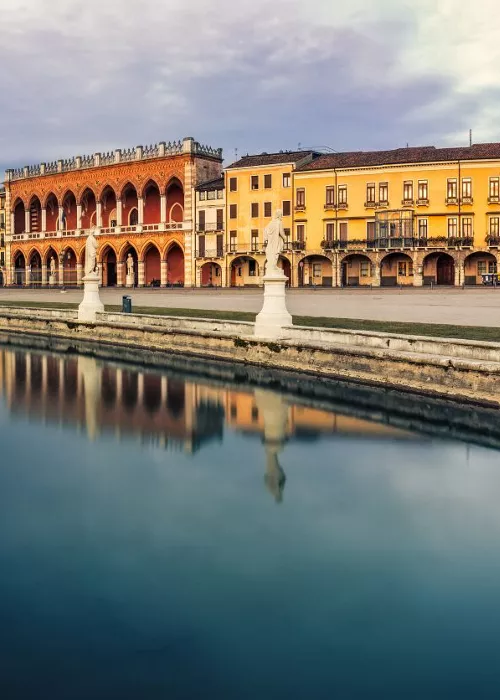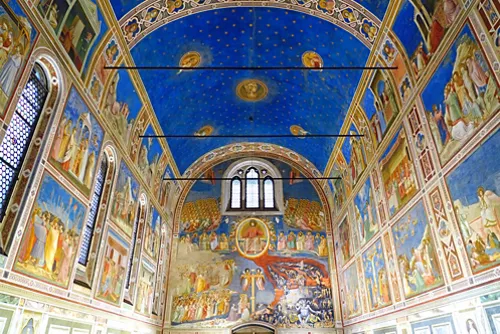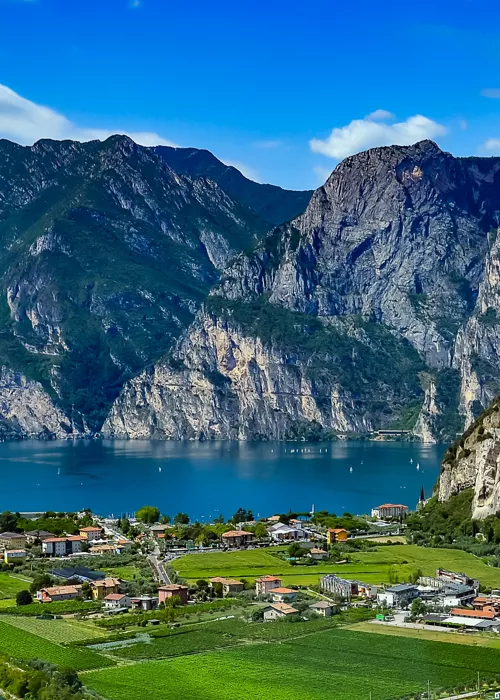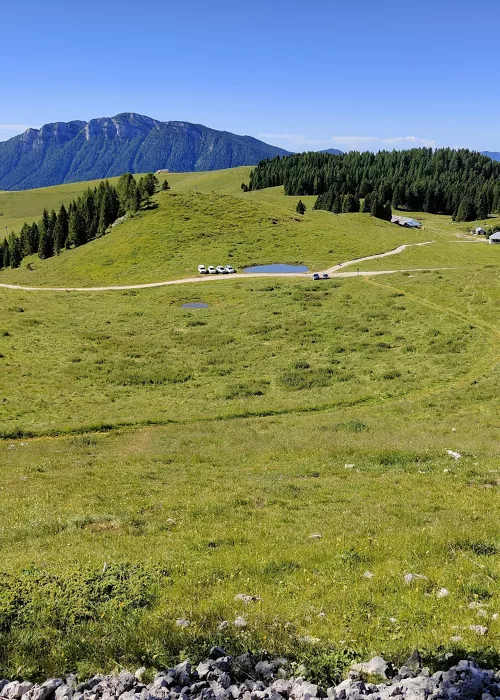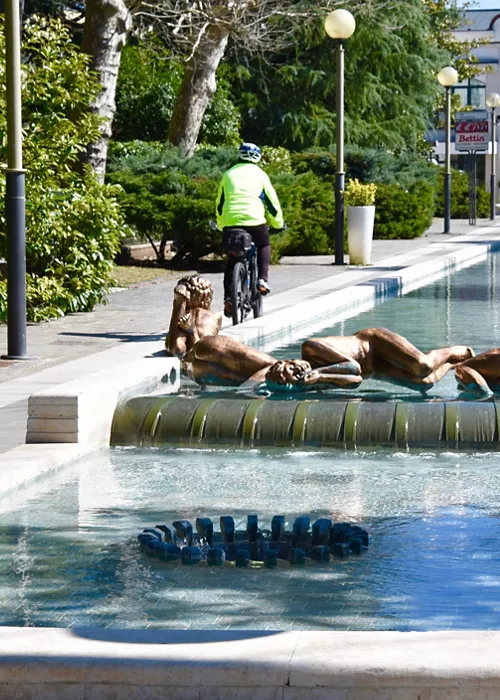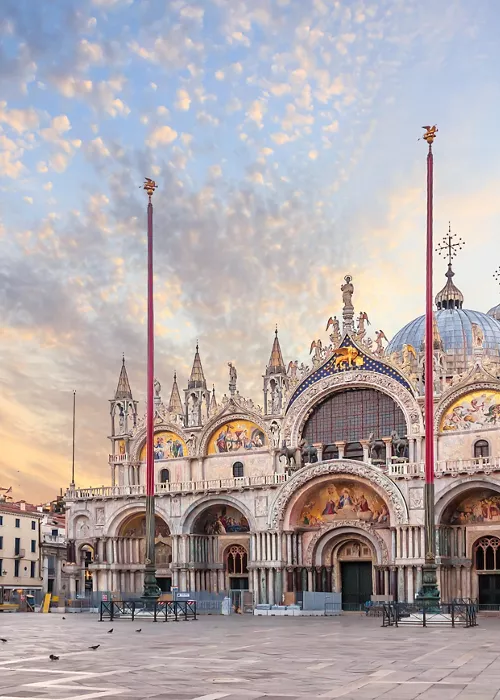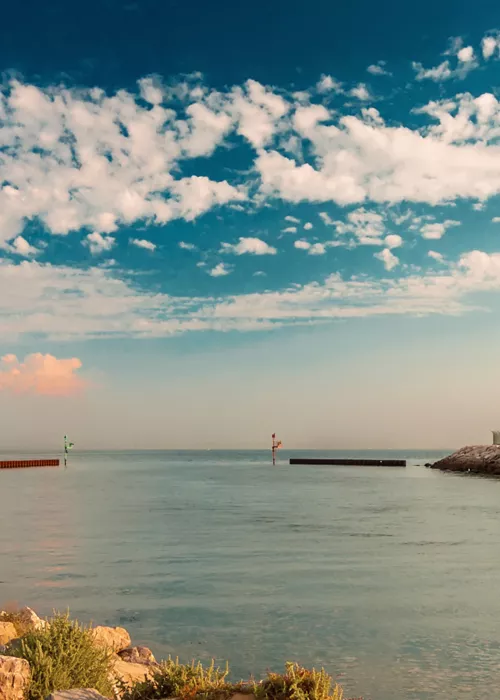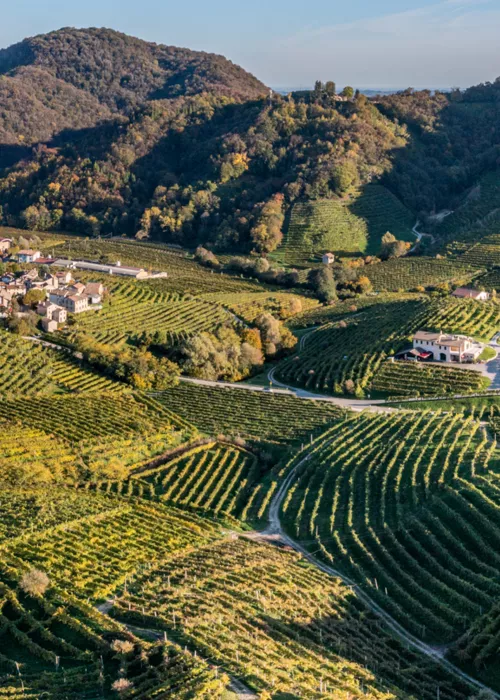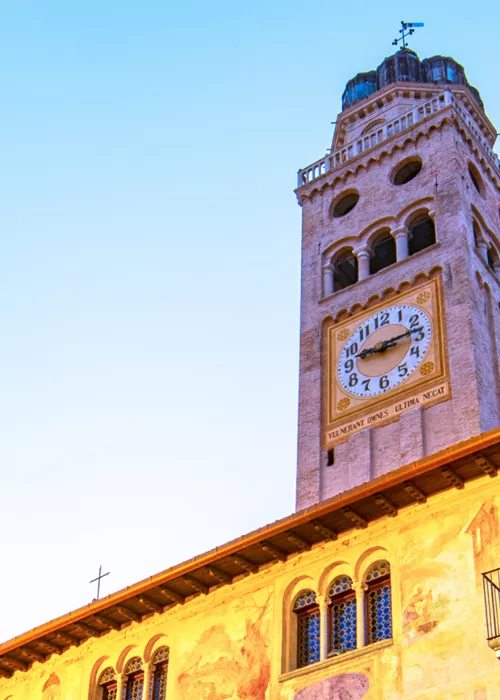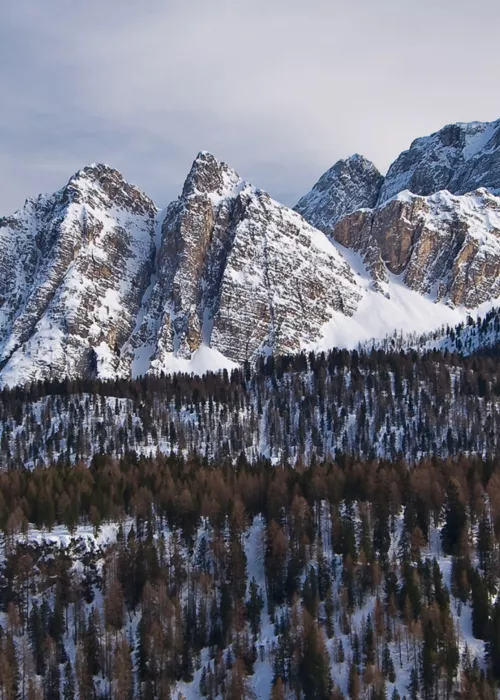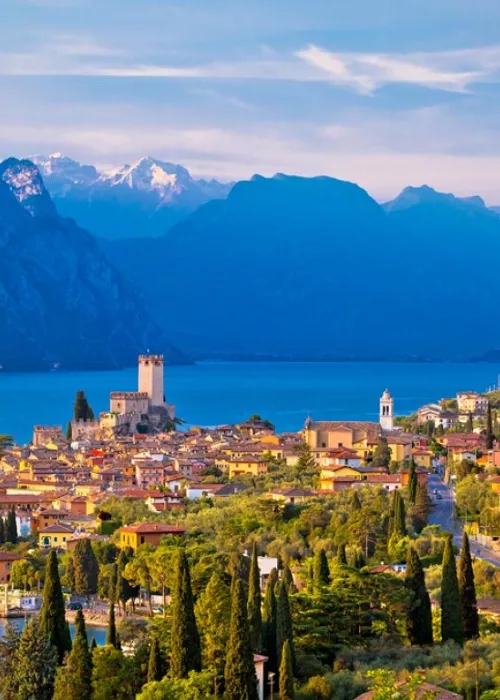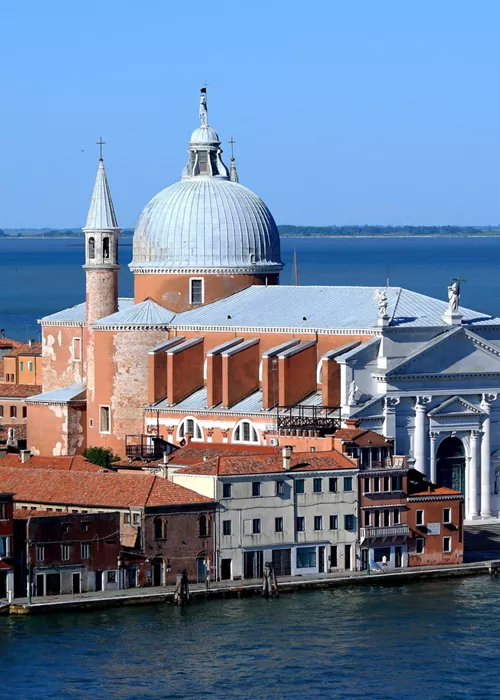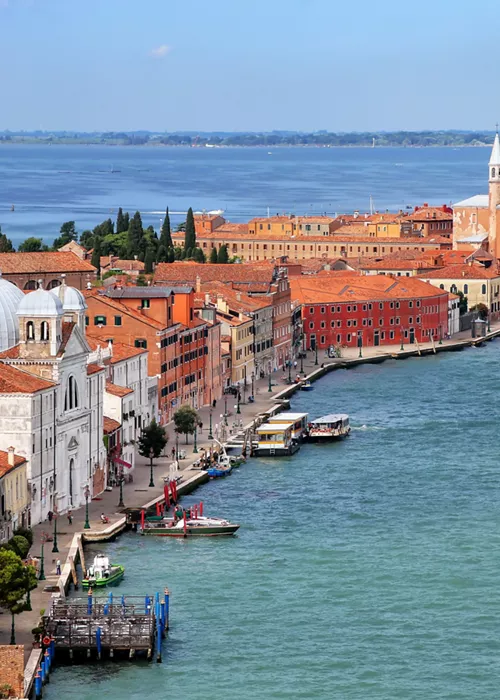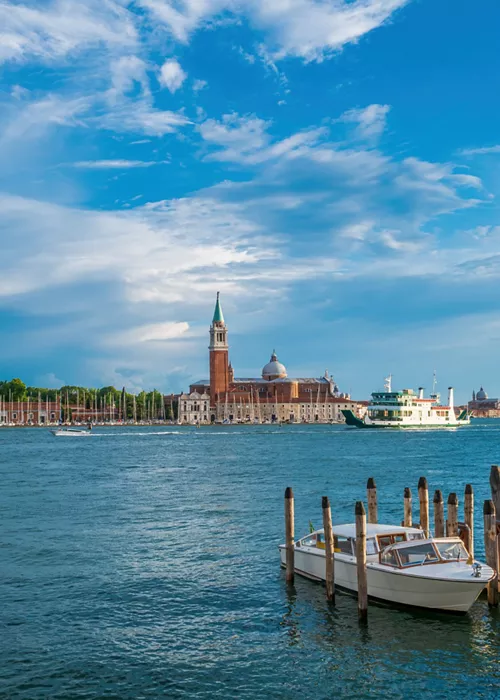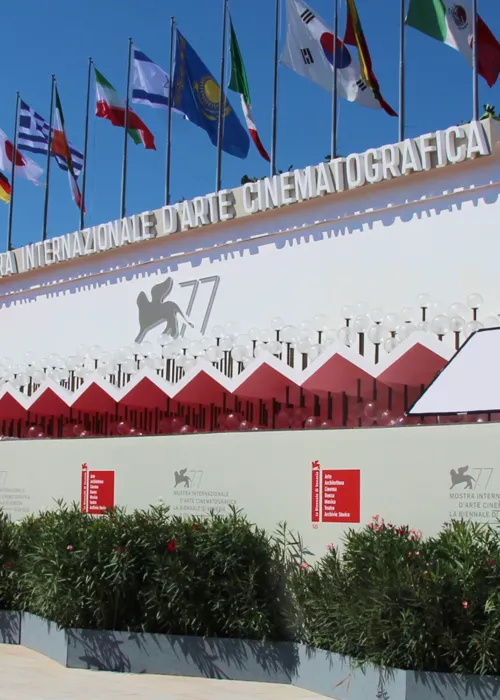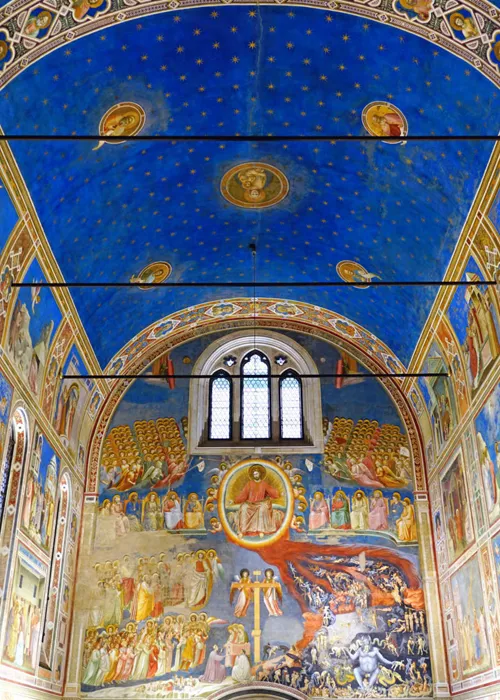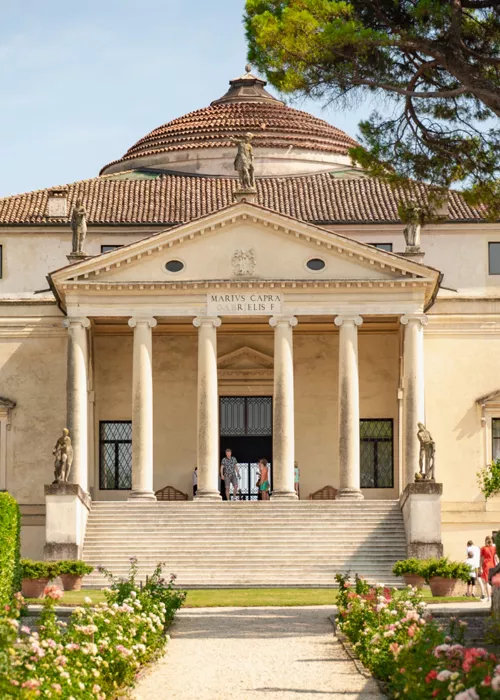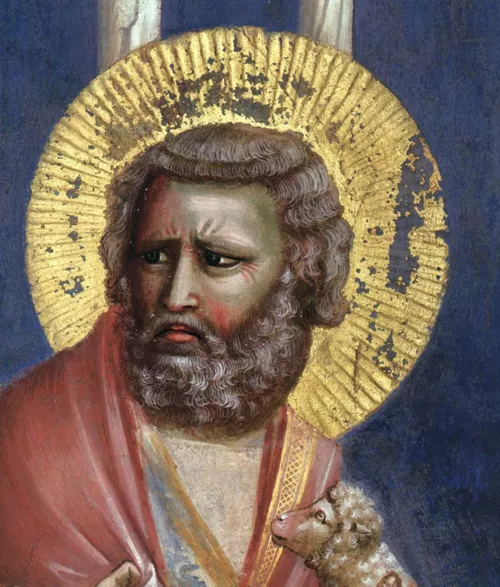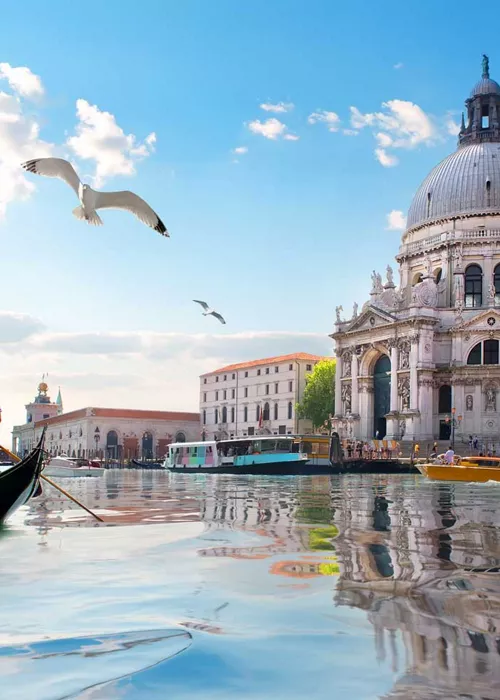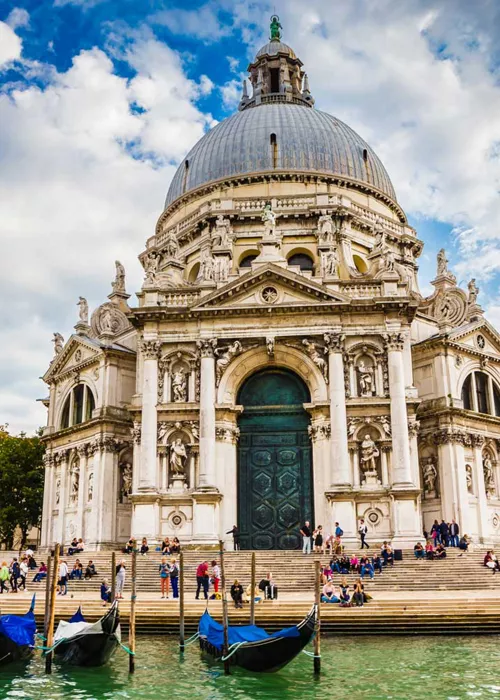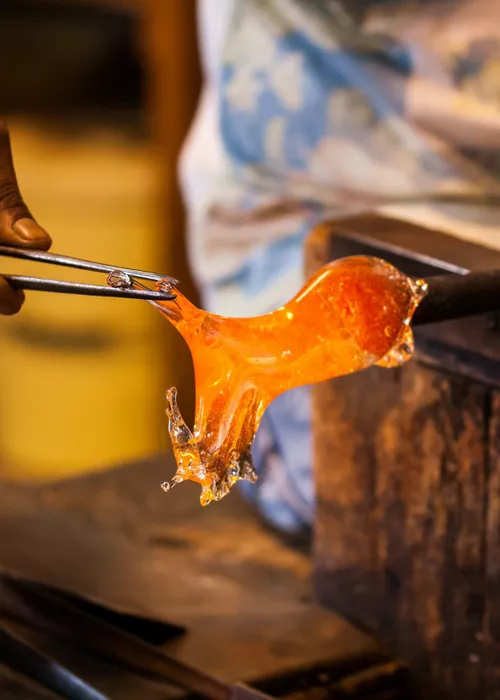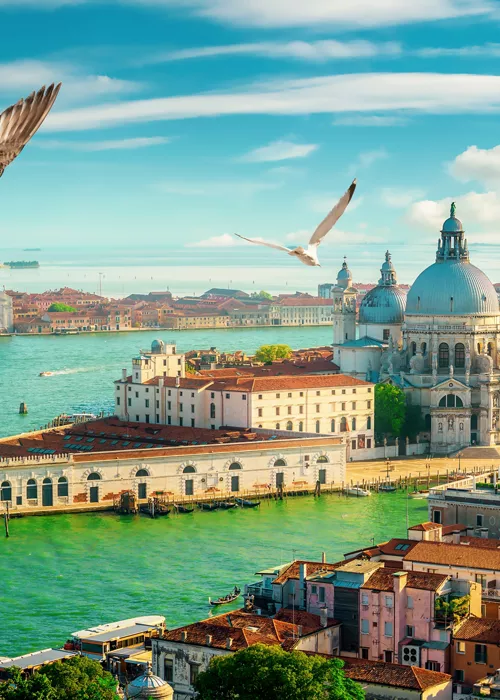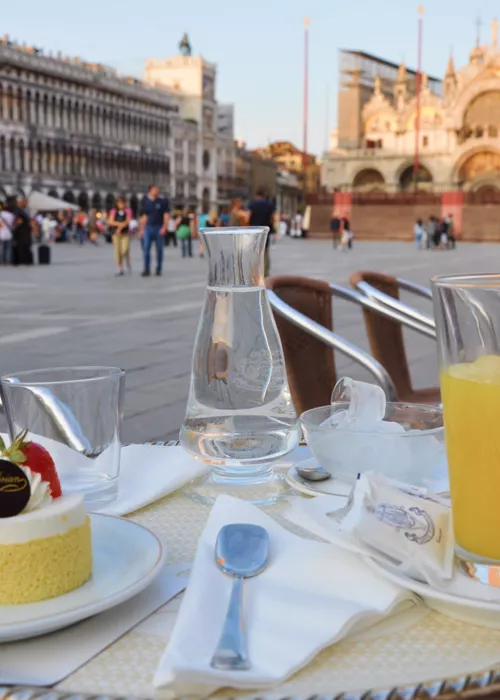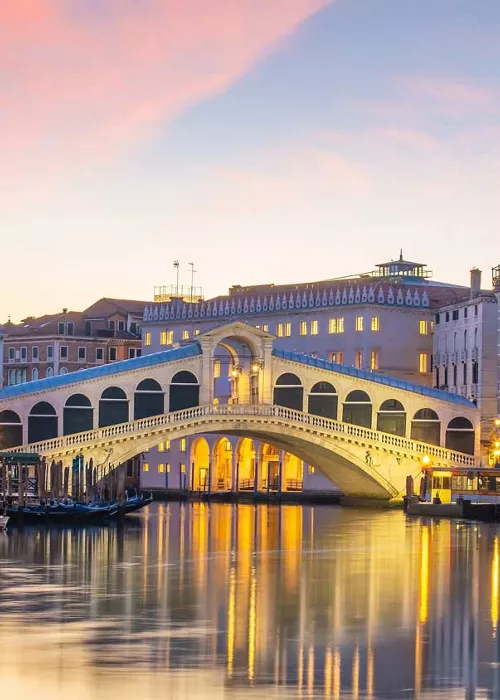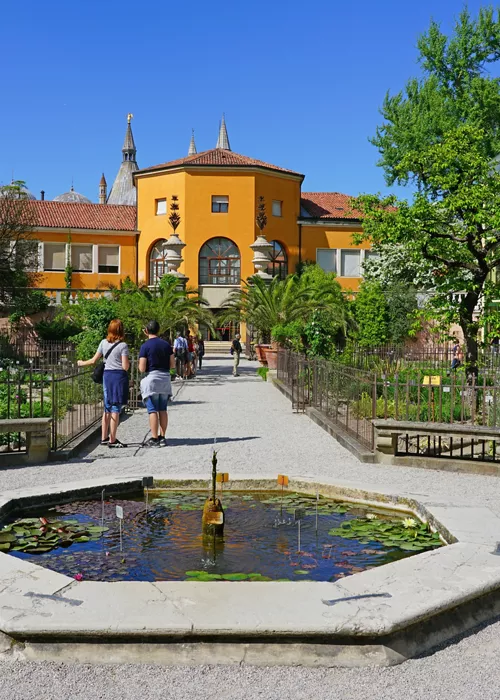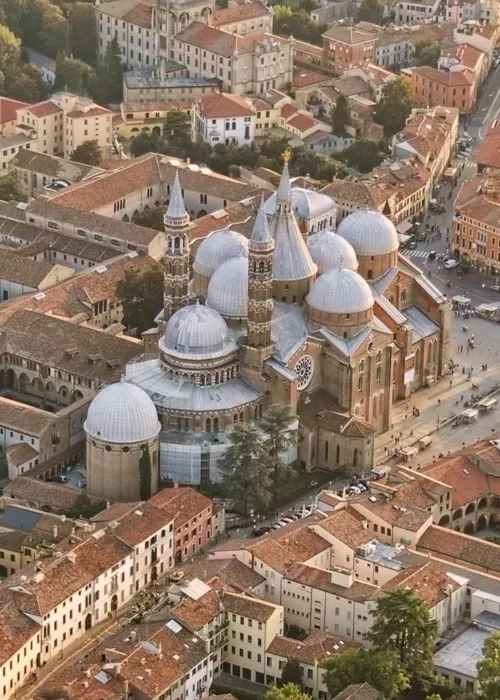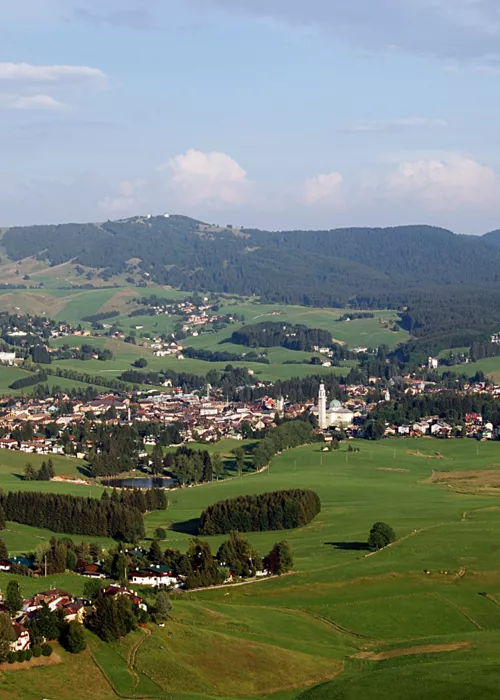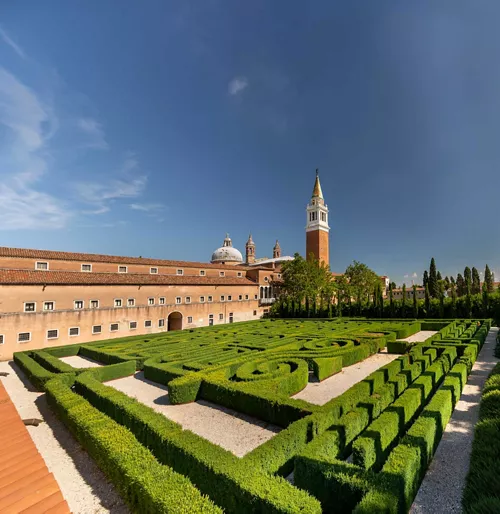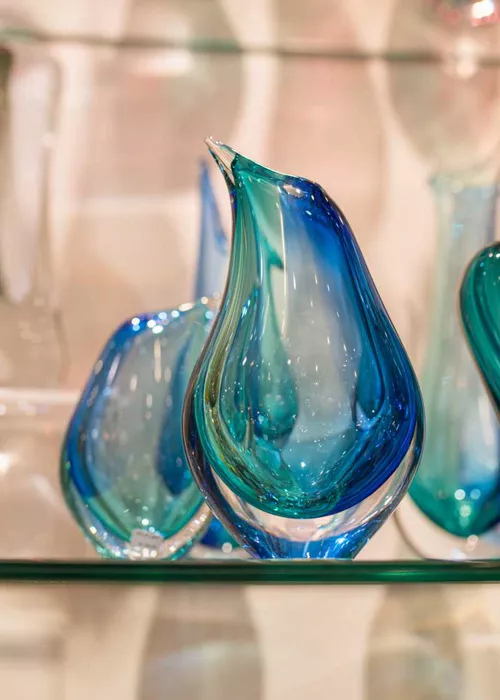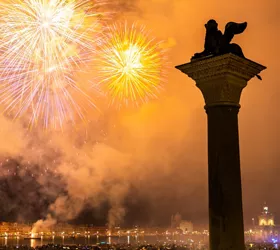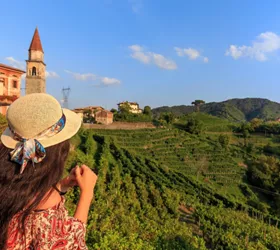Veneto enchants with its immense artistic and historical heritage and elegant cities
5 minutes
Veneto is one of the best known and most popular tourist destinations in the world thanks to its cultural heritage, its cities rich in unique attractions, its landscape, and its fascinating variety of environments and ecosystems.
Origins and history of Veneto
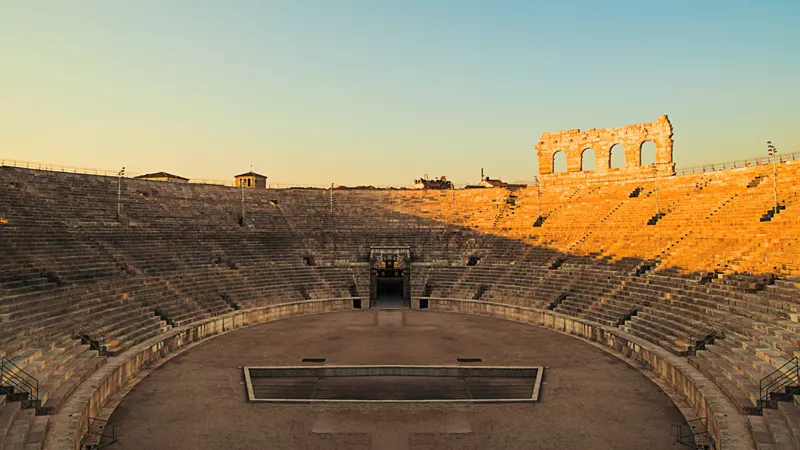
Always a rich and prosperous region, after the fall of the Western Empire and the invasion of the Lombards, Veneto was divided for centuries between the continental area, under Lombard rule, and the coastal area, which witnessed the birth of the splendid Republic of Venice from 697.
The feudal system began to break down from the year 1000, and the free communes developed into powerful lordships over the next two centuries. During this period, Ezzelino III da Romano became lord of Verona, Vicenza and Padua. In the following decades, Venetian rule reached the hinterland and many magnificent Palladian villas, designed by architect Palladio for the most important families of the Republic of Venice, were built.
Napoleon and the Austrian rule became a thing of the past after the Third Italian War of Independence in 1866, but during the First World War, Veneto became a battleground once again, with the Piave area remaining a place of resistance for the Italians for months.
Main cities in Veneto
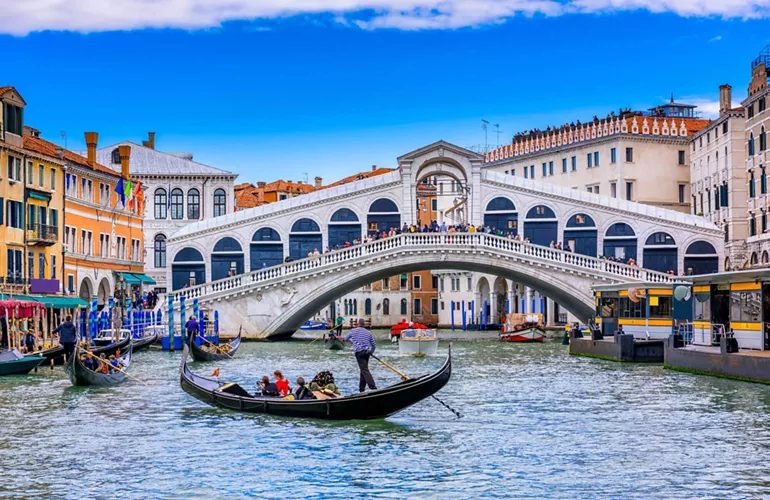
Known around the world for the beautiful Venice, with its lagoon, small Venetian islands, St. Mark's Square and the charming Grand Canal, Veneto boasts some of Italy's most beautiful cities.
Verona, the city of Romeo and Juliet with the imposing Arena of Verona, enchants visitors with its historic centre full of Roman monuments that merge with Renaissance art.
Vicenza, a trove of Palladio's treasures, is a city with something new to discover down every alleyway, starting with the Olympic Theatre and the majestic Palladian Basilica.
A few kilometres away is Padua, the city of Sant’Antonio with its famous squares, the Basilica of St Anthony and the Scrovegni Chapel, covered entirely by frescos painted by Giotto.
What to see in Veneto
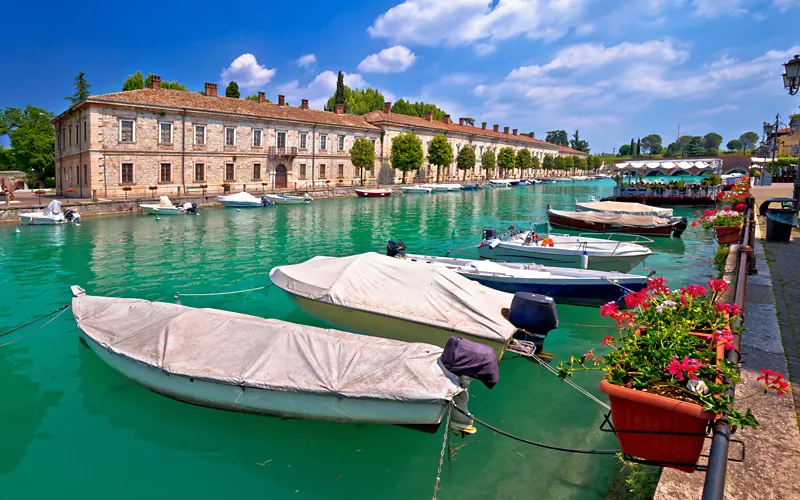
Sea, mountains, lakes, countryside, cities of art and good food. Veneto truly has something for everyone, guaranteeing all who visit truly a special experience.
From Lake Garda, you can reach the vast Asiago Plateau with its green meadows and dense forests ideal for long nature walks.
On your way down to Padua, it is worth admiring the vastness of Prato della Valle, Europe's fifth largest square and a true symbol of Padua, before taking an energising break at the Terme Euganee thermal resort, between the towns of Abano Terme and Montegrotto Terme.
Venice is just next door: be sure to visit St Mark's Square with its Basilica and imposing bell tower, as you stroll among the narrow streets, stopping occasionally to snack on cicchetti and enjoy a spritz. It is well worth taking a gondola, or a vaporetto is also a great experience: Venice seen from the water has an unparalleled charm.
Then you can treat yourself to a few hours on the beach in beautiful Jesolo: 15 kilometres of sandy coastline, plenty of accommodation and countless outdoor experiences.
If you enjoy exploring a unique cultural landscape and want to discover the best flavours of Veneto, we recommend visiting the Prosecco Hills of Valdobbiadene and Conegliano, a UNESCO World Heritage Site since 2019.
If you love a mountainscape, the province of Belluno is for you: Cortina d'Ampezzo, in the Dolomiti Superski area, has 70 downhill slopes served by five cable cars and 26 chairlifts.
A little further east are the Three Peaks of Lavaredo, where you will find yourself enchanted by the azure waters of Lake Misurina. You can also hike to Lake Sorapis, a turquoise jewel set in the Dolomites at an altitude of almost 2,000 metres.
Unusual places in Veneto
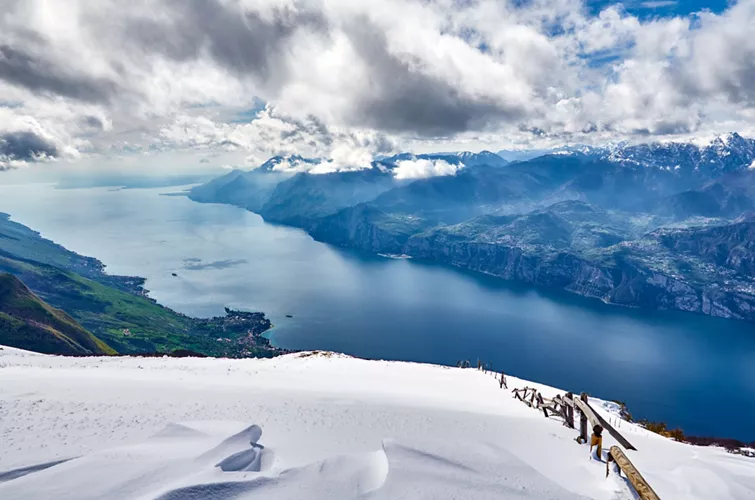
To truly know a region, you have to explore its most unusual places, such as the Balot tacà via in the westernmost area of Veneto, on the shores of Lake Garda: a large boulder suspended between the walls of the deep gorge of Malcesine, an hour's drive from Brenzone sul Garda.
On the Asiago Plateau, an easy five-kilometre route takes you up to Altar Knotto, a striking rock formation overhanging the Val d'Astico valley.
Following the Prosecco and Conegliano Valdobbiadene Hills Wine Route, you will discover an area full of charm, historical and artistic attractions as you find historic wine cellars, tourist farms and osterias around every corner.
And if you fancy spending a few hours relaxing in pristine nature, head to the Vallevecchia Nature Oasis, a large habitat rich in flora and fauna surrounded by marine, lagoon and river waters.
Typical Veneto products
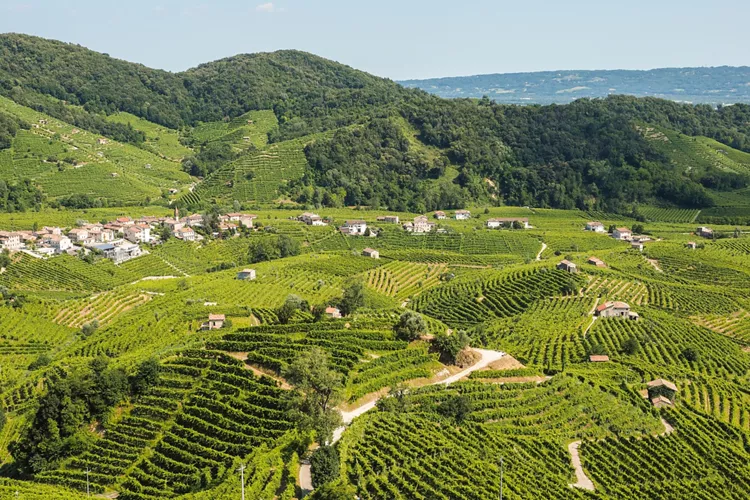
The famous wines of Veneto, from Prosecco di Valdobbiadene to Amarone della Valpolicella, are best enjoyed together with traditional regional dishes, such as the much-loved polenta, often served with codfish. Bigoli, a fresh pasta popular throughout the territory, is delicious with a duck or fish sauce.
Veneto is also the land of Grana Padano DOP and Asiago cheese, which dates back to the year 1000. Radicchio Rosso di Treviso has been produced in Treviso for centuries in two variants, Precoce and Tardivo, while Verona has upheld the tradition of eating Pandoro, a fluffy Christmas cake, since the 13th century.
Veneto events
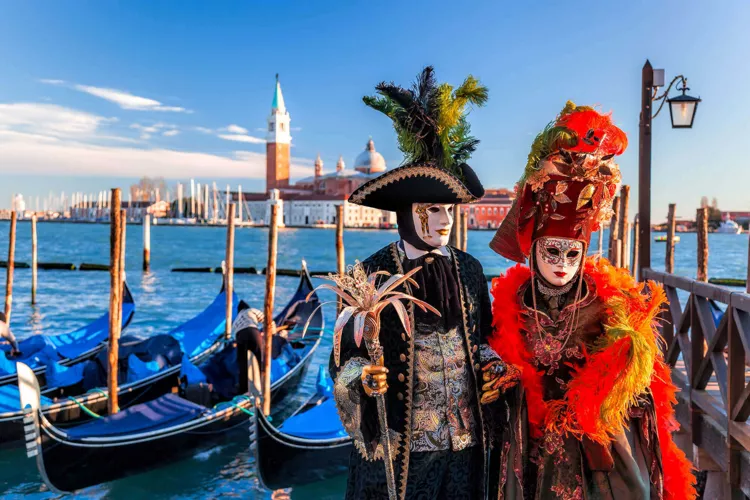
Many events that attract millions of visitors to Veneto are linked to the history of the Venetian Republic.
The Venice Carnival, a public holiday since 1296, transforms the city every year into a magical place filled with traditional masks, costumes and performances, including the Flight of the Angel from St Mark's Campanile.
The feast of the Redeemer, celebrated on the third Sunday in July to commemorate the end of the 1575-1577 plague, begins with the opening of the votive bridge connecting the Zattere promenade to the Redentore Church and ends with the Redentore Regattas in the Giudecca Canal.
One of the most spectacular and picturesque events that the Venetians hold most dear is the Historical Regatta, with several races on the first Sunday in September along the Grand Canal on particular types of boats, such as the fast Pupparin, the light Mascareta and the iconic Gondolino.
The Venice Biennale cultural foundation also organises the prestigious Venice Film Festival every year between August and September and the International Art Exhibition every two years between April and November.

